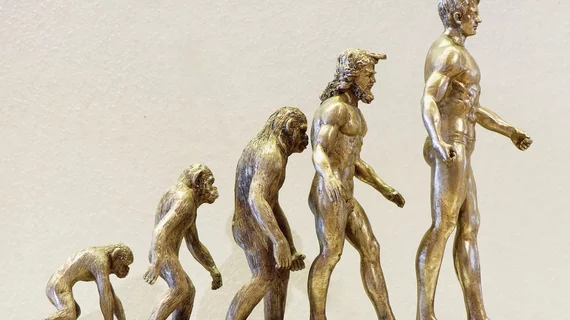Advanced imaging reveals human evolution from the neck up
Using CT to image skulls of humans, chimpanzees and gorillas, and tapping MRI to render brain volumes and structures, scientists in Switzerland have uncovered new clues to the trajectory of human evolution.
The team found the relationship between the brain and braincase in humans is unique to the species, and structural changes in these two anatomic structures emerged independently of one another.
The research was lead-authored by anthropologist José Luis Alatorre Warren of the University of Zurich and published Oct. 14 in Proceedings of the National Academy of Sciences.
Changes in human neurocranial structure “reflect constraints related to increased encephalization and obligate bipedalism, resulting in relative enlargement of the parietal bones and anterior displacement of the cerebellar fossa,” the authors write.
In a news release, they explain the significance of this finding in lay language: The evolutionary braincase changes are associated with humans’ shift to walking upright.
Meanwhile the independent changes to the brain itself correspond, unsurprisingly, with the development of language and other higher cognitive abilities.
“Having answered the brain-braincase question for humans and great apes, we can now take a fresh look at the braincases of fossil hominids,” the authors state.
Contributing to the work from the U.S. was William Hopkins, PhD, of Emory University’s Yerkes National Primate Research Center.
Click here to read the study in full for free and here for the news release.

